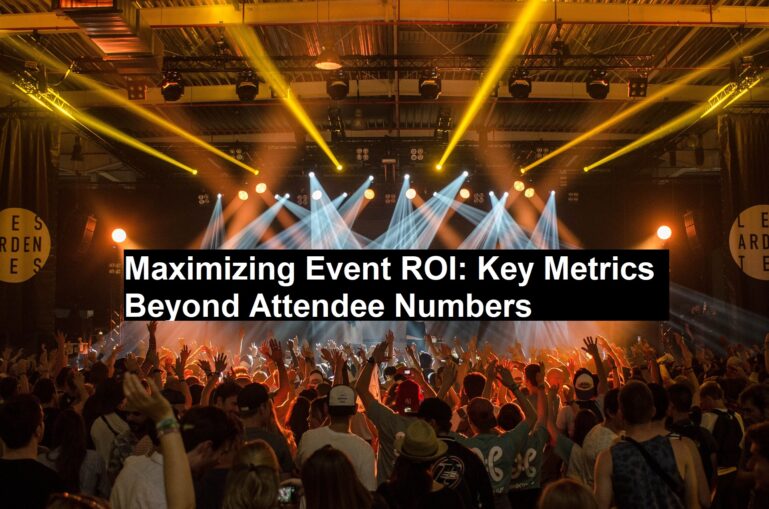Maximizing Event ROI: Key Metrics Beyond Attendee Numbers

When it comes to corporate events, measuring success requires more than just tracking attendance figures. In today’s competitive market, it’s important to use a wide range of metrics to truly understand an event’s return on investment (ROI). This guide delves into key performance indicators—such as engagement, financial performance, and long-term influence—to help you get a full picture of your event’s impact.
The process begins even before the event kicks off. By evaluating pre-event metrics such as social media reach, email click-through rates, and registration demographics, you can gauge the level of interest and fine-tune the event experience. Analyzing these early indicators can provide valuable insight into your audience’s preferences and help align the event with their expectations.
During the event, focus shifts to engagement metrics, like the number of attendees actively participating in sessions, interacting in real-time through Q&As, or engaging with event-related social media. Tracking content consumption—such as session views and material downloads—also offers important insight into the value your attendees are gaining from the event.
Read: Reducing Industrial Machinery Downtime with Strategic Maintenance Solutions
Once the event concludes, the true ROI comes into focus. Collecting post-event feedback through surveys and assessing the Net Promoter Score (NPS) helps you gauge satisfaction and identify areas for improvement. Monitoring continued post-event interaction, such as on-demand content views and ongoing social media engagement, allows you to measure the long-term impact of your event.
A crucial component of measuring ROI is financial evaluation. By comparing ticket sales, sponsorship revenue, and overall costs, you can assess the financial success of your event. Balancing cost efficiency with a high-quality attendee experience is essential for a profitable event.
Networking outcomes are another important area. Tracking new connections—such as business cards exchanged or LinkedIn connections made—can give you an idea of how successful your networking efforts were. The follow-up actions, like setting up meetings or establishing potential collaborations, can further solidify the long-term value of your event.
Events also contribute to strengthening your brand’s presence. Metrics like media coverage, increased social media followers, and positive testimonials help demonstrate how the event impacted your brand’s visibility and reputation.
Finally, it’s essential to track long-term outcomes, such as lead generation, conversion rates, and repeat attendance, to see how your event contributes to the larger business goals. Understanding how these factors correlate with customer lifetime value can provide a more holistic view of the event’s success.
Maximizing-Event-ROI
Advanced technology and data platforms, such as those offered by RainFocus, are invaluable tools for gathering and analyzing all these data points. By using event marketing platforms to track and evaluate the metrics, you can present clear insights to stakeholders and secure continued support for future events.
